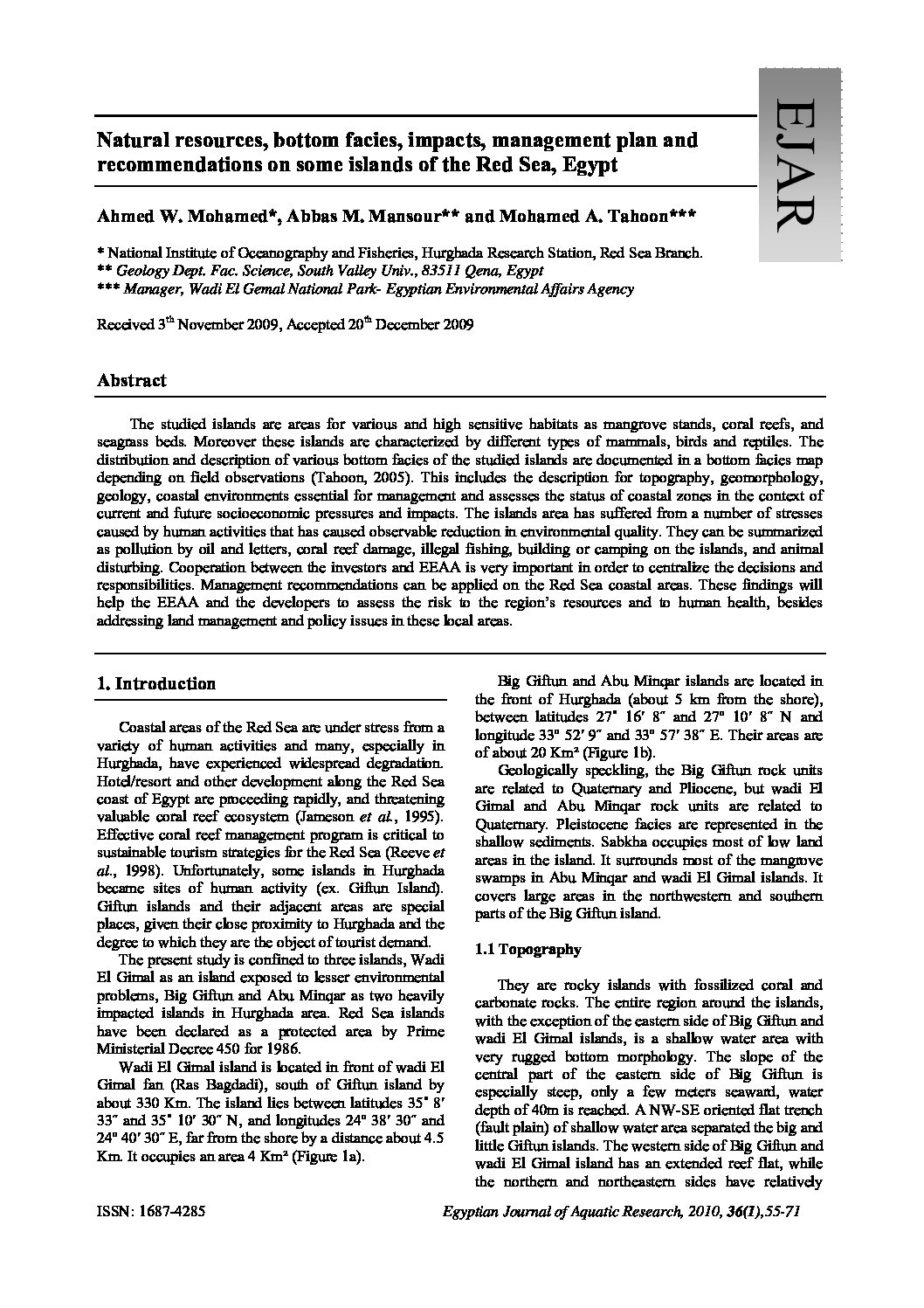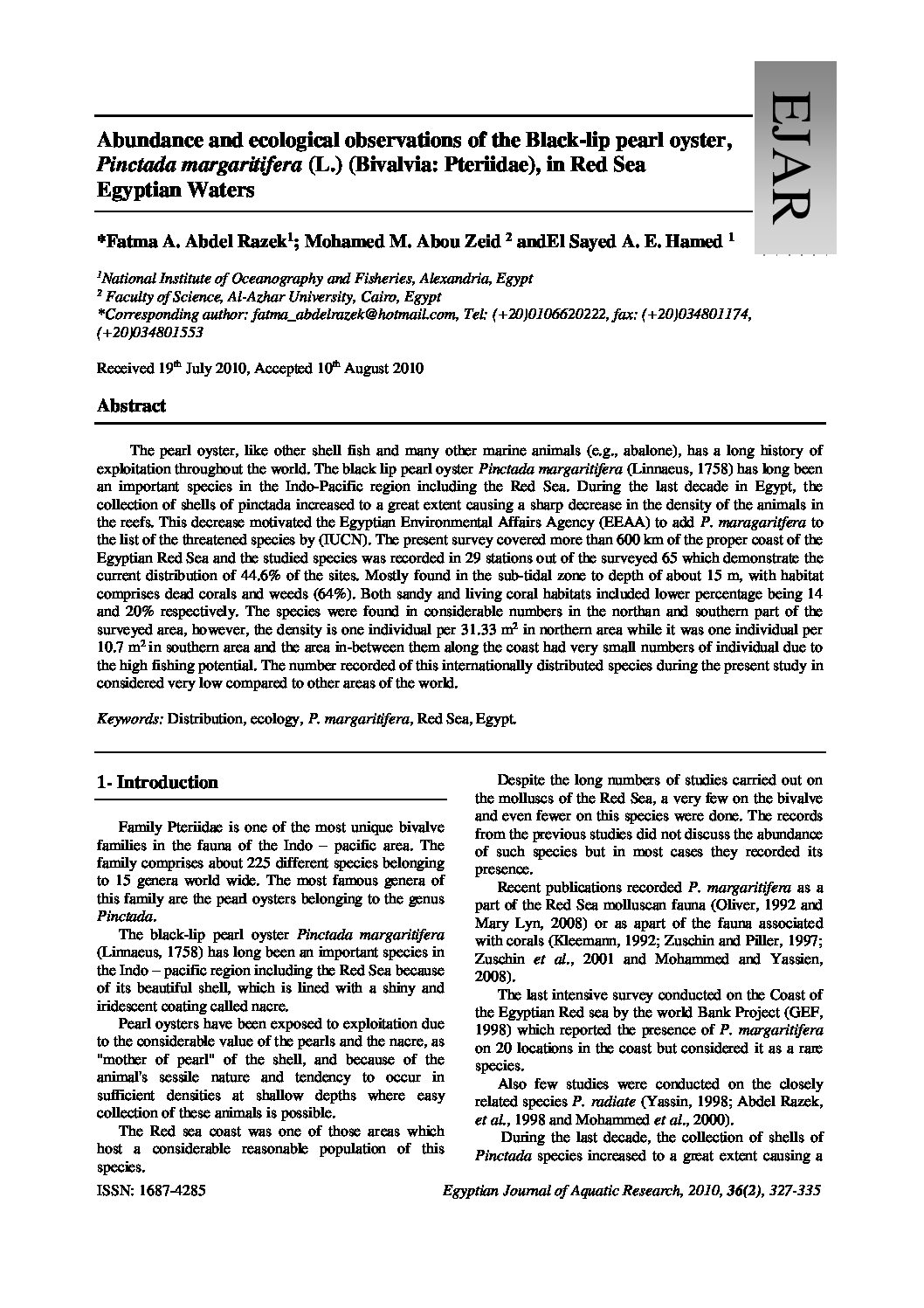Categories
vol-36Natural resources, bottom facies, impacts, management plan and
recommendations on some islands of the Red Sea, Egypt
Ahmed W. Mohamed*, Abbas M. Mansour** and Mohamed A. Tahoon***
* National Institute of Oceanography and Fisheries, Hurghada Research Station, Red Sea Branch.
** Geology Dept. Fac. Science, South Valley Univ., 83511 Qena, Egypt
*** Manager, Wadi El Gemal National Park- Egyptian Environmental Affairs Agency
Received 3th November 2009, Accepted 20th December 2009
Abstract
The studied islands are areas for various and high sensitive habitats as mangrove stands, coral reefs, and
seagrass beds. Moreover these islands are characterized by different types of mammals, birds and reptiles. The
distribution and description of various bottom facies of the studied islands are documented in a bottom facies map
depending on field observations (Tahoon, 2005). This includes the description for topography, geomorphology,
geology, coastal environments essential for management and assesses the status of coastal zones in the context of
current and future socioeconomic pressures and impacts. The islands area has suffered from a number of stresses
caused by human activities that has caused observable reduction in environmental quality. They can be summarized
as pollution by oil and letters, coral reef damage, illegal fishing, building or camping on the islands, and animal
disturbing. Cooperation between the investors and EEAA is very important in order to centralize the decisions and
responsibilities. Management recommendations can be applied on the Red Sea coastal areas. These findings will
help the EEAA and the developers to assess the risk to the region’s resources and to human health, besides
addressing land management and policy issues in these local areas.







